Virtually every major media outlet has given their take on the 2016 Presidential election, to the point where these examinations feel more indicative of each outlet’s identity than any real, comprehensive explanation of the event. Statistics-driven 538’s series focuses on how the rest of the media misinterpreted the polling data, perennial news explainer Vox largely covered the mentality of a confused electorate, Time’s immediate post-mortem reflected the magazine’s bias toward conventional media wisdom, etc. For media organizations, the 2016 election is a grand and complicated Rorschach test: what you see in the pattern is about you, not the pattern.
With this three part series looking back at the election, Torchlight hopes to cut through the distorted, ideology-driven conversation by laying out the facts to draw clear and comprehensive conclusions about the nature and causes of the event.
On Monday, Tom Rich talked about the Republican primary resulting in the nomination of Donald Trump. Today, I’m discussing the Democratic primary resulting in the nomination of Hillary Clinton, and the series concludes on Friday with Andrew Coleman’s examination of the many significant factors that led Trump to victory and the Presidency over Clinton. We hope you find the series enlightening and clarifying.
– Josh Kyu Saiewitz
I. The Democratic Primary and Why it Hasn’t Ended Yet
Faulkner once wrote, “The past isn’t dead; it isn’t even past.” He might have been talking about the 2016 Democratic primary. The contest for the Democratic party’s nomination for President was an event that should have ended even before it officially concluded with Hillary Clinton on stage at the Democratic National Convention last July; yet it’s still going on. Why?
The fight between the progressive wing of the party, as represented by Bernie Sanders, and the rest of the party, as represented by Clinton during the election and Democratic Congressional leaders since then, has been happening for a long time and probably would not have been fully quelled even in the wake of a Clinton victory in the general. But Clinton’s loss to Trump was a traumatic event ensuring lingering division amid a mood on the left of national PTSD. As Gulf War veteran Anthony Swofford says at the end of the movie Jarhead, “We are still in the desert.” Maybe if we backtrace our steps, we can find a way out. The past may never be dead, but eventually it might at least be past.
II. The Candidates
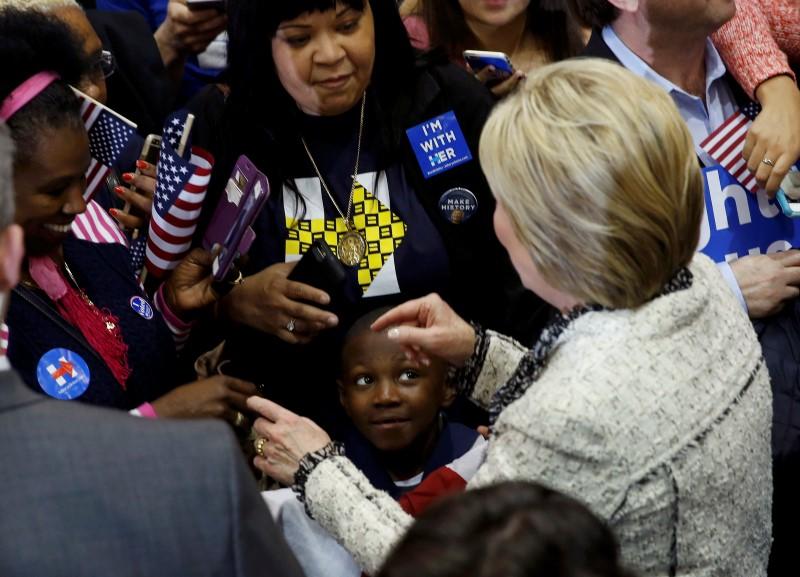
Long before she announced, the narrative surrounding Hillary Clinton was that of inevitable ascendancy. Arguably this is the only story the media correctly predicted during the entire 2016 election season, and that’s probably because the one thing pundits consider to be most important–Washington insider perceptions–turned out, for once, to be decisive.
Clinton’s connections to the Democratic party went back decades, from her role as First Lady in Bill Clinton’s administration all the way up to her term as Secretary of State under President Obama. A strong runner-up in the 2008 presidential primaries, when her presumptive nominee status was upended by an upstart Senator from Illinois, Clinton learned the value of heading off strong rivals in advance. Secretary of State was a powerful resume builder for a future run, particularly as foreign policy was something of a weak spot for her in ‘08. Between her experience in government and as a candidate and her party connections, Clinton was so well positioned in the invisible primary (where potential candidates compete for fundraising, staff, and party endorsements) that many who might have been serious challengers decided not to enter the race. (Some of those names were suggested later on as candidates for Vice President, while others are being bandied about already for 2020.)
The result was a field consisting of presumptive nominee Hillary Clinton and a bunch of people who barely deserve the phrase also-rans: Baltimore mayor and character on HBO’s The Wire Martin O’Malley, glass of room temperature tap water Lincoln Chafee (top campaign issue: the metric system), Jim Webb (basically a Republican who wandered onto the wrong stage), and single issue/single term/single serving candidate Lawrence Lessig (an admirable academic and activist who had no business running for office). Thanks to Clinton’s obvious qualities and strong establishment ties, she secured a near insurmountable advantage from the field itself.
But that same situation bred resentment that powered yet another insurgent primary campaign against Clinton. Enter Bernie Sanders.
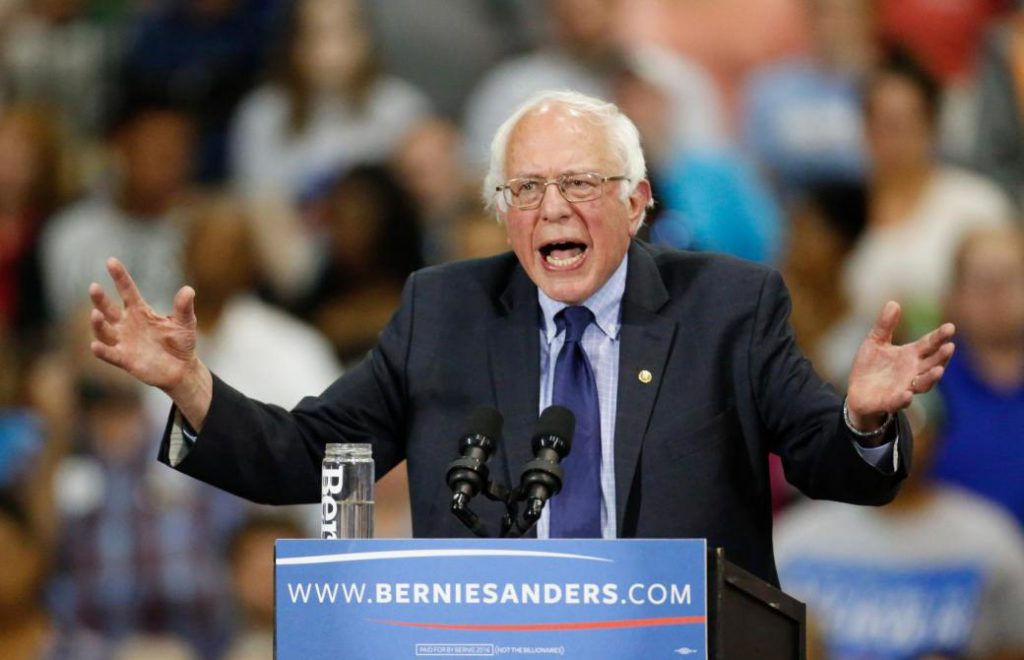
Hillary Clinton is sometimes called an imperfect vessel for the Obama coalition. To continue the metaphor, Bernie Sanders was also an imperfect vessel, but for a very different group. A 74-year-old Independent Senator (caucusing with the Democrats) from Vermont with a give-no-fucks haircut and self-proclaimed Socialist beliefs, Sanders was a seemingly unusual choice to become the darling of the progressive wing of the Democrat party.
But in reality, all of the things that make Sanders different made him wealthy in the coin of the realm: authenticity. Many Americans, particularly progressives, are frustrated with politics and distrustful of politicians, whom they view as dishonest or otherwise disingenuous. Sanders’ entire career and personality reflected someone who stood by his principles without altering or softening them to win votes. If democratic politics is a mechanism for finding and empowering those individuals who reflect mass trends, Sanders definitely embodied a certain kind of person. According to entrance polls conducted among Democratic voters at caucuses in seven states (check the bottom of the link for the others), Sanders voters tended to be young, white males with an income of less than $49,999 per year who considered themselves very liberal, many of whom identified as Independent rather than Democratic. (One modern political trend has been voters on both sides shifting their political identification from either party to Independent; the vast majority of these vote consistently with one party, making the identification a social label rather than a predictor of swing status.)
The most telling data in those polls, however, are the places where Sanders and Clinton supporters strongly agree and where they strongly disagree. With a few exceptions (income equality being a major one), both candidates’ followers more or less agree with both candidates on the issues, with more than half of polled caucus voters stating that both Clinton and Sanders shared their values.
But massive disagreements arose when it came to character and strategy. When asked what candidate quality mattered most of them, Sanders voters overwhelmingly chose “Honest and trustworthy,” while Clinton won voters who cared most about “Has the right experience,” “Cares about people like me,” and–an issue of strategy–”Can win in November.”
This data lays bare how the two wings of the party found themselves at odds. Policy differences between the two candidates were relatively minor, with Sanders’ positions typically being either identical to Clinton’s, or slightly further left (but less realistic). For example, both candidates were for raising the national minimum wage, with Sanders calling for $15 per hour nationwide and Clinton suggesting a more nuanced policy ranging from $12 to $15 per hour depending on locality. A few issues saw the candidates a little more divided, particularly trade, but for the most part the gap between Clinton and Sanders was a matter of strategy, not ideology. By voting record, both candidates’ Senate records showed them as left of center for the Democratic party (for example, both were further left than Senators Obama, Kerry, and Reid). The chief difference was that Sanders was willing to make Trumpian promises about grand policy initiatives (promising to release more prisoners than exist in the federal system, for instance) while Clinton was more cautious and pragmatic, choosing to sell policy she believed had a better chance of implementation, especially given the possibility of having to work with a Republican Congress as historically obstructionist (or even more so) as they had been under President Obama. In debate after debate, these minor policy differences were exaggerated throughout the primary.
III. The Campaign
Perhaps as a result of there being limited daylight between Clinton and Sanders on policy, the primary race ultimately became about process as a proxy for character–a battle that predicted and even exacerbated the general election contest. Contention is strongest when differences are fewest… which is to say that things got pretty nasty.
The reason that process had to stand as a proxy for character, rather than character dominating the debate directly, comes down to the campaigns’ respective strategies. Clinton’s establishment ties, massive advantage on endorsements, and broad support among the party led her to take a cautious road. Her campaign took few risks throughout the primary, including refraining from going negative against Sanders. (The Clinton campaign had access to significant opposition research it generally declined to use against him.) Her decision was to play to her numerical strengths, particularly among the minorities who represent the broad base of the Democratic Party, and wait Sanders out. By mid-March, she had a near mathematical certainty of victory thanks to a sizeable delegate lead requiring Sanders to win by bigger and bigger margins in order to catch up as the primary process continued.
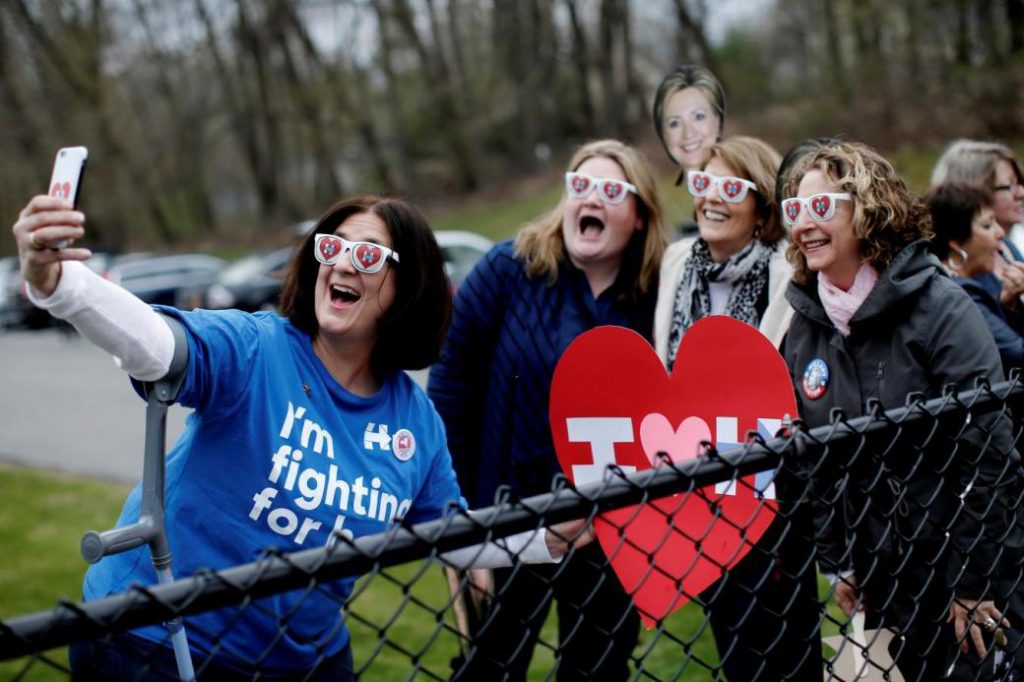
Sanders, meanwhile, didn’t share Clinton’s advantages and couldn’t afford to play it safe. His early strategy was in a certain sense a rejection of strategy itself–arguably Sanders entered the race intending to get his message out there, not to win, and only shifted his plans once it became clear that there was a significant contingent of the party, mostly the progressive wing, who didn’t like or trust Hillary Clinton and that contingent was large enough to potentially win him the nomination. Early Sanders campaign maneuvers, like his reliance on fundraising from small donors, his pledge to maintain a positive, policy-based campaign, and his dismissal of the emails issue in the first debate on October 13th (“The American people are sick and tired of hearing about your damn emails!”) helped attract a large and dedicated following.
The Sanders paradox is that he became a real contender to win the nomination by convincingly portraying himself as someone who didn’t care about winning (at least, not enough to make the traditional moves that many in the party had tired of–fundraising from wealthy and corporate donors, attacking opponents on issues of character, etc). But as soon as he started winning, the situation reversed itself, and eventually so did Sanders–for example, by May, when the delegate math was becoming unbeatable, Sanders was calling for more attention, not less, to be paid to Clinton’s emails issue:
“That is something that the American people, Democrats and delegates are going to have to take a hard look at. I mean, everybody in America is keeping it in mind, and certainly the superdelegates are.”
– Bernie Sanders on Face the Nation
This was the period in which Sanders’ candidacy arguably did the most damage to Clinton in the general. Arguably after March and certainly by May, Sanders had virtually no chance of winning the nomination. But he continued to campaign in increasingly strident fashion, focusing on process complaints about the primaries themselves. Some were credible–for instance, how New York’s rules required voters to register too far in advance of the primary–but most were at best overblown. Superdelegates, for instance, serve a moderately valuable role in building consensus and protecting the party from troublesome outsiders like Donald Trump, but like the Electoral College in the general, don’t ever actually swing elections against the will of the voters. Their only downside is that they play into ginned-up perceptions of unfairness.
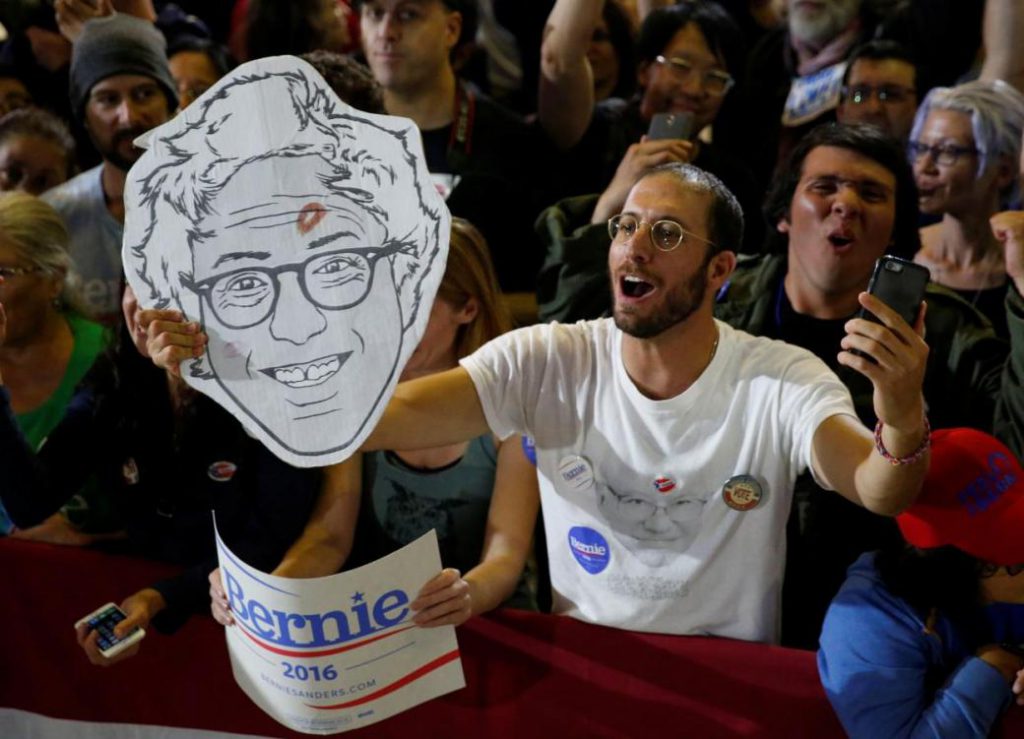
And that right there is the problem–the perception of unfairness in the primaries is a festering wound that remains open to this day. The idea that the primaries were rigged was gleefully picked up by Trump and then “coincidentally” (read: via as-yet-unproven collusion) reinforced by the Russian-orchestrated hacked DNC emails misleadingly released by Wikileaks during the general election. The effect of these attacks in the general remains difficult to gauge, but there’s a reasonable argument to be made that by encouraging mistrust of the Democratic Party establishment, Sanders inflamed existing perceptions of the establishment politician in the race, Hillary Clinton, as equally untrustworthy or even illegitimate as the nominee.
An aside: the corruption insinuations against Clinton by way of delegitimizing her victory in the primary gains an added ickiness from the fact that Clinton was the majority choice of the Democratic Party’s base–ie., women and especially people of color. Sanders, who has long argued that his “revolution” requires the party to embrace the (white) working class and issues of economic inequality over so-called identity politics, certainly continued to run that way during his campaign. This was particularly noticeable in his tendency to answer any question on race by pivoting to his stump speech, arguing that a rising tide lifts all boats–i.e., if we fixed the class divisions in America, it would also heal our racial struggles. This answer is unsatisfying for a number of reasons, perhaps most simply because even within class struggles lies racial disparity. The richest blacks live in neighborhoods on economic par with those of some of the poorest whites, for instance. Likewise, a rising economic tide brought on by a higher minimum wage doesn’t help those who can’t get a job in the first place because their race puts their resume below that of a white person with a criminal record. The conflict between white identity politics hiding behind class issues (racism masquerading as “economic anxiety”) and racial identity politics, nascent in the Democratic primary, would explode in the general and continue to linger on in post-mortems of the 2016 election.
At any rate, the charges that Clinton benefitted from a rigged primary exist despite the basic truth that she was an enormously advantaged candidate due to her experience, policy acumen, and strong appeal to the party’s base in her sales pitch as essentially Obama’s chosen successor. Whether the primaries were rigged or not (they weren’t) is really immaterial, because discounting actual vote tampering (which nobody alleges), Clinton was as inevitable a victor as everyone thought, even if Sanders gave her a race along the way.
IV. The Results
Clinton officially declared her candidacy on April 12, 2015, won 30 primaries and six caucuses, and received 55.2% of the vote, translating into 2,205 delegates and 602 superdelegates. She officially accepted the nomination July 26, 2016 at the Democratic National Convention in Philadelphia.
Bernie Sanders officially declared on April 30, 2015, won 11 primaries and 12 caucuses, and received 43.1% of the vote, translating into 1,846 delegates and 47 superdelegates. He officially conceded on June 16 and endorsed Clinton for President almost a month later. Sanders then leveraged his followers to win significant concessions in the party platform at the convention, particularly an emphasis on his plan for free college tuition (without the work requirements present in Clinton’s college tuition plan).
Hillary Clinton went on to a narrow loss in the general against Donald Trump. More on that in Andrew Coleman’s final part in our series, which will post Friday.
V. “Last Year at the Primary”
Sometimes discussing the 2016 election is like watching the 1961 French art film Last Year at Marienbad. The film concerns three individuals, two men and a woman, who travel in endless verbal circles, discussing and analyzing events that took place the year before. None of them can agree even on basic facts, and the repetitive, obsessive nature of their talks eventually makes you question whether reality is fundamentally knowable. In this sense, even the left is now “post-fact,” not necessarily because they don’t believe in evidence but because the primary is the perfect locked box upon which anyone can project their opinions, their beliefs, their damnable counterfactuals. My own analysis in this article is basically accurate, but every line could be disputed by someone more or less sympathetic to either candidate, more or less engaged in the minutiae of who said what and which emails were sent when and to whom. As they say in the film, the discussion itself is a rigged game:
“I have another game to suggest instead. I know a game I always win.”
“If you can’t lose it’s not a game.”
“I can lose. But I always win.”
This is the same fundamental illogic that underlies the way the primary fight has continued on long after the general. Sanders fans argue that Sanders would have won a fair contest, or that if he won the primary he would have beaten Trump in the general. Just last week, Joe Biden said in a Q&A that he should have ran and might have won both the primary and the general. While I disagree with both those notions, that’s not the point. You can’t rewrite history, and while you’re busy trying, you’re losing the future. The Democratic party desperately needs to agree on a narrative so that it can heal–but like those French aristocrats, nobody can find common ground, even as they all stand in the same room, making new memories that could replace last year’s if only they’d let them.
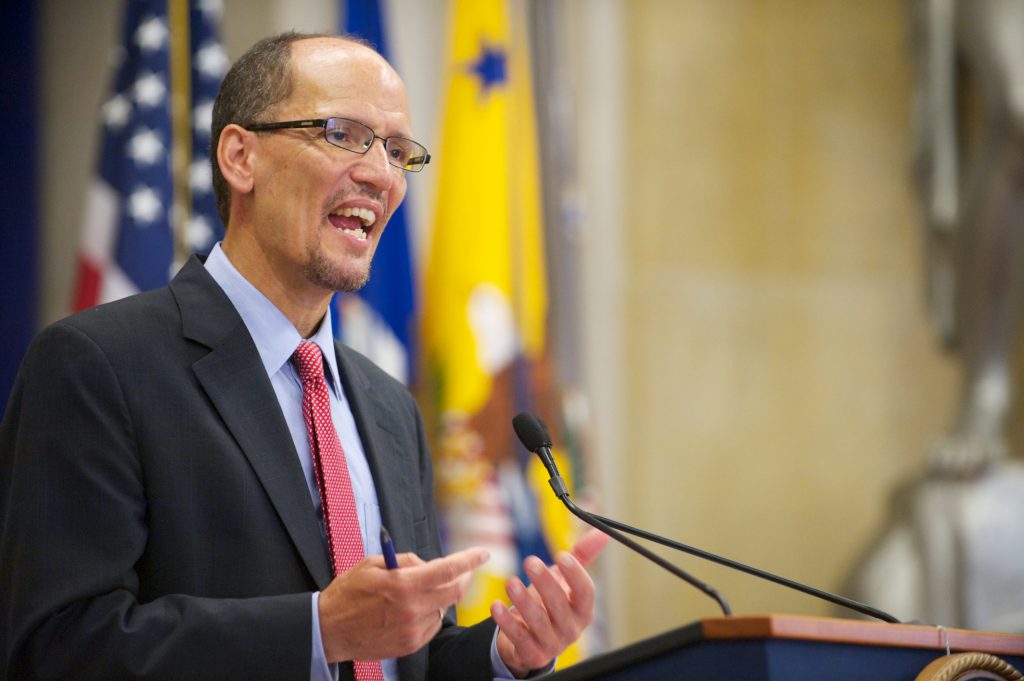
Nowhere was the issue clearer than in the recent DNC chair election, where progressive Tom Perez and progressive Keith Ellison somehow came to be seen as proxy champions for the Clinton and Sanders wings of the party. Ellison/Sanders supporters argued that he was the only possible leadership, new blood from outside the establishment (Ellison has been in Congress for seven years) to shake up the party after the scandalous (or at the very least, electorally ineffective) chairmanship of Debbie Wasserman Schultz. For their part, Perez/Clinton supporters argued that there was nothing wrong with running against Ellison and that as Obama’s former Secretary of Labor, Perez had progressive bonafides to go along with his support within the party. The entire thing was a textbook case of collectively displaced emotion, Democrats trying to deal with the still unresolved conflict between the left and the center of the party. (For their part, Perez and Ellison tried to quell the fight by agreeing beforehand that the winner would nominate the loser as Deputy Chair, which Tom Perez did immediately after winning the election.)
Both sides are at fault here, if not entirely equally. The left tars the center with all of the known issues with politics as a process–sometimes there’s waste or corruption, sometimes compromises have to be made, sometimes noble ideas are hampered by the pragmatic needs of reality. For its part, the center hesitates to take on progressive policy because it can’t do so without electoral support, and the far left have a history of abandoning the party at the first sign of impurity, voting for a third party or simply staying home. Neither side wants to reach out because they’ve been burned before, the left fleeing when it gets let down by the center’s compromises, the center only compromising when the left leaves stronger policy no cover at the voting booth. But if the Hatfields and the McCoys are ever going to stop killing each other, somebody has to choose peace.
Because both sides need each other. Sanders’ big, bold, simple ideas like the Fight for $15 or free college for all are just what the party needs to capture the hearts and minds of low information voters nationwide and get Democrats excited about voting again. But Clinton’s understanding of how to turn progressive ideas into pragmatic, enacted policy is a skill we need, too. Meanwhile, if the party remains divided, it has no hope of defeating the perennially united Republican party.
If Democrats are going to come together, they need to get past the 2016 primary. They need to say to themselves, “Even if the DNC didn’t play fair, Clinton would have won anyway; even if Sanders had won, he would have lost in the general. None of us disagreed then or disagree now with one another more than we do with Trump and the Republicans.” Even if it glosses over the details, even if it’s inaccurate. Because we don’t need the “truth” right now, whatever that is. We need a story, something that feels true enough–a story we can share together and heal and bond over so we can stand arm in arm for the next fight.


